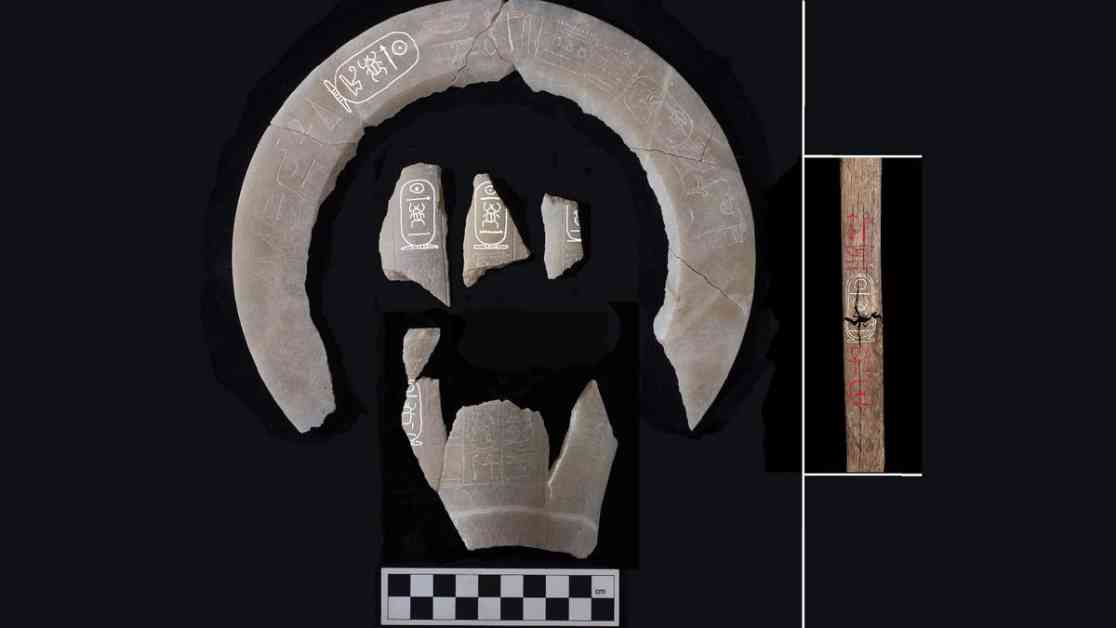Ancient Pharaoh’s Tomb Unearthed in Egypt: A Rare Discovery
Archaeologists have made an extraordinary find in the desolate landscape west of the Valley of the Kings in Egypt. The tomb of Pharaoh Thutmose II, who reigned over Egypt alongside Queen Hatshepsut around 3,500 years ago, has been uncovered, marking a significant archaeological breakthrough. This discovery comes as a rare occurrence, being the first tomb of a pharaoh to be unearthed since the famed King Tutankhamun’s burial chamber was opened in 1922.
The Unveiling of an Ancient Mystery
The revelation of Thutmose II’s tomb sheds light on a pivotal era in Egyptian history, offering invaluable insights into the life and reign of this enigmatic ruler. The excavation team, led by experts from the University of Cambridge, stumbled upon the tomb in October 2022. However, it wasn’t until the recent excavation seasons in late 2024 and early 2025 that the true significance of their discovery came to light.
The Burial Site: Insights and Speculations
Upon examining the artifacts found within the tomb, including pottery fragments bearing the name of Thutmose II, archaeologists were able to confirm the identity of the burial place. The tomb, measuring approximately 95.1 feet in length, houses a burial chamber of considerable dimensions, providing a glimpse into the grandeur of ancient Egyptian burial practices.
An intriguing aspect of the tomb’s contents is the absence of the pharaoh’s body, a mystery that has puzzled researchers. The tomb appears to have been flooded shortly after Thutmose II’s burial, prompting the removal of its contents to an unknown location. Despite the absence of the burial goods, experts maintain that the tomb was not looted; rather, the entire burial was carefully relocated.
The Legacy of Thutmose II
Thutmose II’s reign remains shrouded in mystery, with conflicting accounts regarding the duration of his rule. While some sources suggest a brief reign of less than five years, others propose a longer period of dominance spanning over a decade. Historical records depict Thutmose II as a military leader who quashed uprisings in Nubia and extended his campaigns into the eastern Mediterranean, showcasing his prowess as a formidable ruler.
One of the most intriguing aspects of Thutmose II’s legacy is his marriage to his half-sister, Queen Hatshepsut, who later ascended to the throne as a female pharaoh following his demise. This union marked a significant political alliance that shaped the course of ancient Egyptian history, highlighting the complex dynamics of power and succession in the royal lineage.
Expert Opinions and Interpretations
The discovery of Thutmose II’s tomb has sparked a range of reactions within the archaeological community, from excitement to skepticism. While some experts laud the find as a groundbreaking revelation that enriches our understanding of ancient Egypt, others remain cautious, calling for further evidence to substantiate the tomb’s attribution to the pharaoh.
Filip Taterka, an Egyptology professor, views the discovery as a significant milestone in unraveling the mysteries of the Valley of the Kings and its neighboring burial sites. He emphasizes the importance of ongoing debates surrounding the first pharaoh interred in the valley, suggesting that Thutmose II’s tomb could offer crucial clues in resolving this historical enigma.
In contrast, Thomas Schneider, a renowned Egyptologist, expresses reservations regarding the identification of the tomb, calling for additional evidence to support the claim. He highlights the unique location of the tomb in Wadi Gabbanat El Qurud, raising questions about its alignment with traditional burial practices of pharaohs within the Valley of the Kings.
Aidan Dodson, another esteemed Egyptology professor, stands firm in his conviction that the tomb belongs to Thutmose II, citing the compelling evidence uncovered by the excavation team. He commends the researchers for their diligent efforts in confirming the tomb’s ownership, underscoring the significance of this landmark discovery in the annals of ancient Egyptian history.
In conclusion, the unearthing of Pharaoh Thutmose II’s tomb represents a pivotal moment in Egyptology, offering a rare glimpse into the life and legacy of this enigmatic ruler. As researchers continue to delve into the mysteries concealed within the ancient burial site, the saga of Thutmose II and his enduring legacy unfolds, beckoning us to explore the depths of Egypt’s rich and captivating past.










